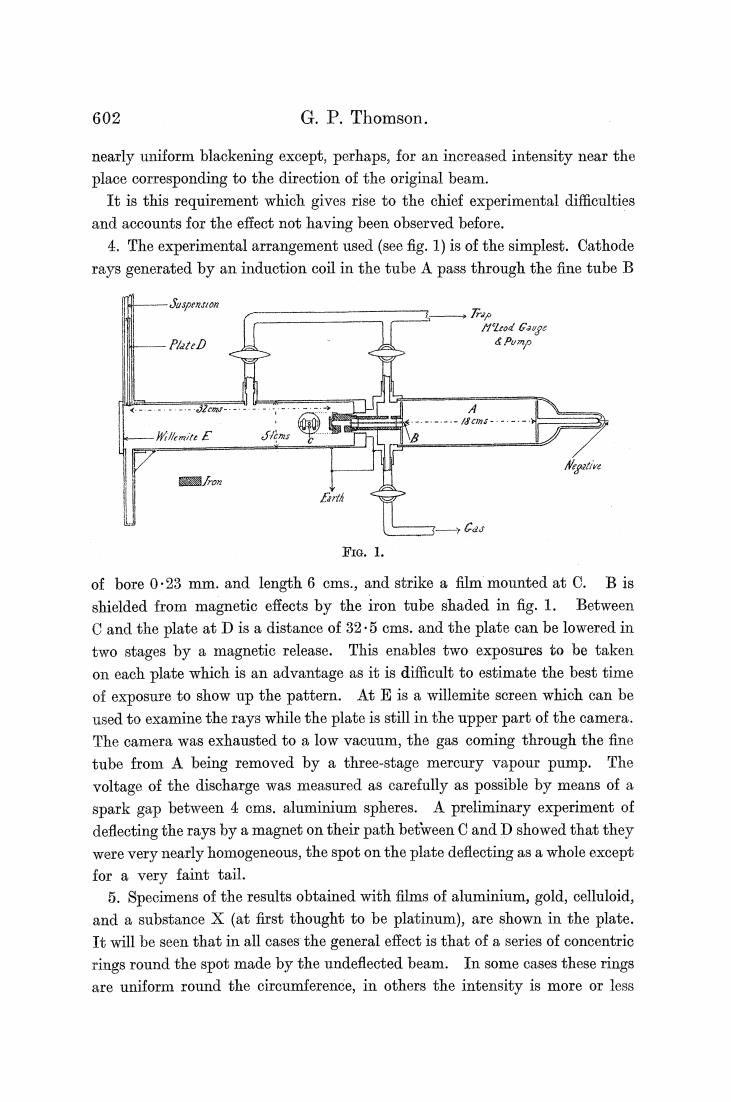正在加载图片...

602 G.P.Thomson. nearly uniform blackening except,perhaps,for an increased intensity near the place corresponding to the direction of the original beam. It is this requirement which gives rise to the chief experimental difficulties and accounts for the effect not having been observed before. 4.The experimental arrangement used (see fig.1)is of the simplest.Cathode rays generated by an induction coil in the tube A pass through the fine tube B -Syspension .Trap MLod Gauge PlateD Pump 00 所肠两eE Eron Cas FIG.1. of bore 0.23 mm.and length 6 cms.,and strike a film mounted at C.B is shielded from magnetic effects by the iron tube shaded in fig.1.Between C and the plate at D is a distance of 32.5 cms.and the plate can be lowered in two stages by a magnetic release.This enables two exposures to be taken on each plate which is an advantage as it is difficult to estimate the best time of exposure to show up the pattern.At E is a willemite screen which can be used to examine the rays while the plate is still in the upper part of the camera. The camera was exhausted to a low vacuum,the gas coming through the fine tube from A being removed by a three-stage mercury vapour pump.The voltage of the discharge was measured as carefully as possible by means of a spark gap between 4 cms.aluminium spheres.A preliminary experiment of deflecting the rays by a magnet on their path between C and D showed that they were very nearly homogeneous,the spot on the plate deflecting as a whole except for a very faint tail. 5.Specimens of the results obtained with films of aluminium,gold,celluloid, and a substance X (at first thought to be platinum),are shown in the plate. It will be seen that in all cases the general effect is that of a series of concentric rings round the spot made by the undeflected beam.In some cases these rings are uniform round the circumference,in others the intensity is more or less